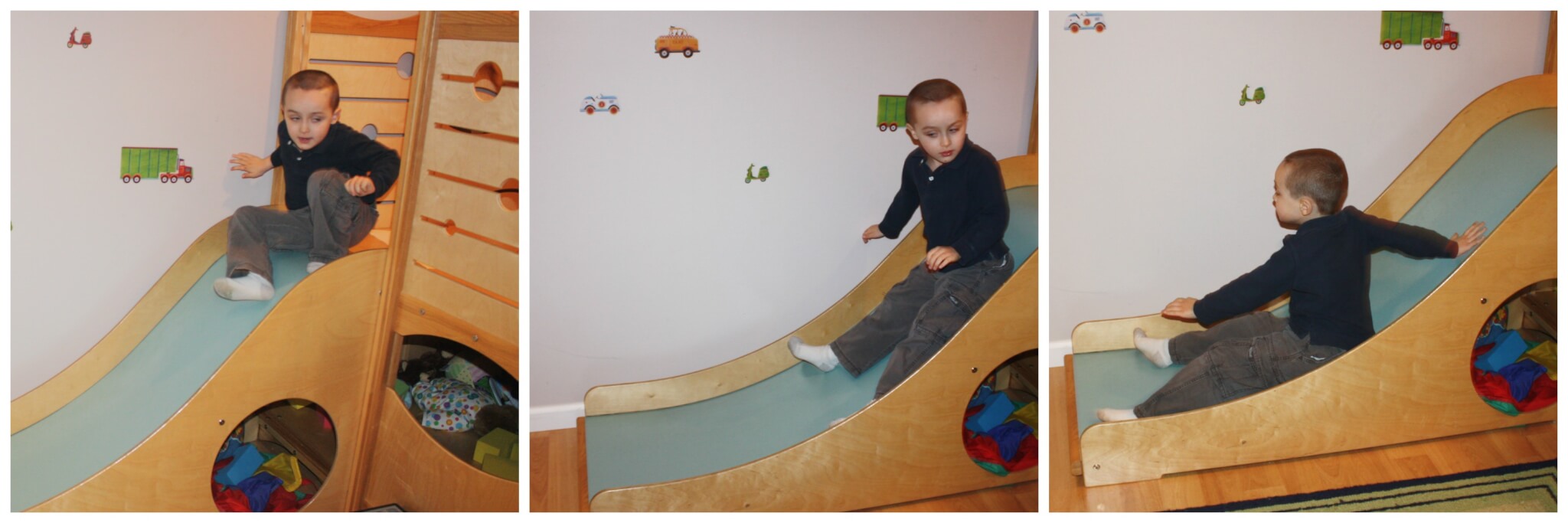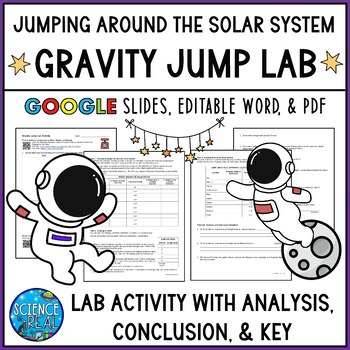

We can see that we need the persons mass. We isolate the final velocity at the end of the launch phase (as the person leaves the ground) We will keep in mind that they started at rest, so the initial kinetic energy was zero.
Gravity lab jump license#
The work-energy principle tells us to set the change in kinetic energy equal to the net work. Jeff Freeman who started jumping and got his license last November. Gravity was acting on them during the launch phase as well, so we need to calculate the work done by gravity, which acts in the opposite direction to motion ($\theta = 180): Let’s figure out what their launch velocity and hang-time will be if the person has a weight of 825 N.įirst we calculate the work done by their legs. Everything we have discussed so far can be summed up by the work-energy principle: The change in kinetic energy of a system is equal to the net work on the system, or written as an equation:ĭuring a jump a person’s legs might apply a force of 1200 N upward on their center of mass while the center of mass moves 0.3 m upward. The net work tells us how much energy is transferred into or out of the kinetic energy, causing a change in kinetic energy ( ). Either way will give you the same answer, which will be the net work. Alternatively, add up the forces, including directions, to find the size and direction of the net force and then multiply by the distance over which the net force is applied to get the net work. Bet You Can’t! NY: Lothrop, Lee & Shepard Books, 1980.How do we calculate the total work when more than one force acts on an object as it moves, so that each force is doing work? What if the forces point in opposite directions so one does positive work and the other does negative work? In this case we calculate the net work done by each force and add them up (keeping negative works as negative) to get the net work.

Simple Physics Experiments with Everyday Materials. Gravity is just one of the interesting forces of nature – there are many more to explore and share. It’s even more fun when you share your discoveries with your family and friends. Learning new things about the world around you is fun and exciting. Share Fun Science Experiments With Family and Friends If you try to shift too far away from your center of gravity, you’ll lose your balance. However, in irregularly shaped objects – the human body, for instance – the center of gravity moves around. This lines up with our slope and y-intercept in our equation. This equation makes sense because we found that the time frame during which the weight was in freefall was t0.38 s to t0.83 s, which means that the weight was in freefall for a little under. The center of gravity for an object with a regular shape – the Earth, for example – is located at its geometric center. The velocity-time freefall equation for the weight would then be y -8.007x + 3.012. Observation: Because all of these tasks restrict the center of gravity, it’s almost impossible for a person to perform any of them.Įxplanation: As far as gravity is concerned, the weight of an object is concentrated at a single center point. Tell her to keep her back straight, her feet flat on the floor, and her arms folded across her chest. Can he do it? Stand upĪsk a volunteer to sit in a straight-backed chair. Tell him to jump forward without letting go of his toes. Can she do it?Īsk a volunteer to bend forward and grab his toes, keeping his knees slightly bent. Instruct her to lift her left foot off the floor. Can he do it? Lift your left footĪsk a volunteer to stand with her right side against a wall, pressing her right foot and cheek against it. Ask him to pick up the penny without moving his feet or bending his knees. Place a penny about one foot away on the floor in front of him. Ask for volunteers for each of these exercises involving the center of gravity: Pick up a pennyĪsk a volunteer to stand against a wall with his feet together, heels pressed against the wall. Adjust properties of the objects to see how changing the properties affects the gravitational attraction. Now it’s time for audience participation in your science show. Visualize the gravitational force that two objects exert on each other. Consequently, objects of different weights fall at the same rate when other forces such as air resistance are not a factor. Observation: The shoe and the paper ball hit the floor at the same time.Įxplanation: Even though the earth exerts more pull on a heavier object, a lighter object experiences a greater degree of acceleration, meaning that it moves at a greater speed. Hold both objects high in front of you at equal heights.Hold the shoe in one hand and the paper ball in the other.

Who thinks both objects will hit the floor at the same time?.Who thinks the paper ball will hit the floor first?.Who thinks the shoe will hit the floor first?.Explain that you will be dropping both objects from the same height. Before performing this experiment, show your audience the shoe and the piece of paper crumpled into a ball.


 0 kommentar(er)
0 kommentar(er)
